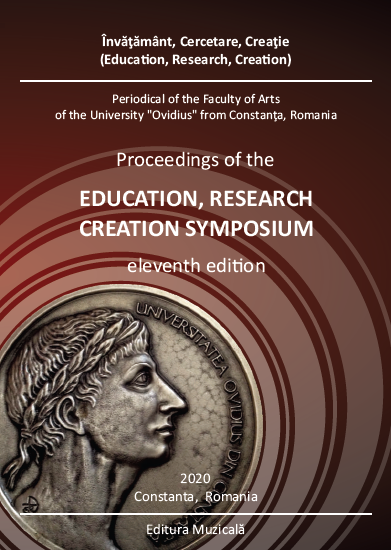Theatrical Anthropology and the gestural archetype
Theatrical Anthropology and the gestural archetype
Author(s): Alina CristeaSubject(s): Fine Arts / Performing Arts
Published by: Editura Muzicală
Keywords: Theatrical Anthropology; Eugenio Barba; scenic behavior; theater; gestural archetype; sats; dance; Stanislavski;
Summary/Abstract: One of the most complex working tools in theater laboratories worldwide is, and we will demonstrate during this dissertation, Theatrical Anthropology. Eugenio Barba defines Theatrical Anthropology as "the study of pre-expressive scenic behavior that underlies the different genres, styles, roles and traditions, personal or collective in the theater" or, as Stanislavski says, the study of the organic nature of all art people, of all nationalities and from all eras. In an organized situation or state of representation, the projection of the physical and mental presence of the actor is based on an elementary architecture, built on the meta-physical pillars of principles different from those of daily life. This projection will be identified during this work in the concept of "extra-everyday behavior", opposed to the daily notion of behavior. From this "dance of oppositions", as Barba calls it, the perfect balance of the statue of a desirable stage projection is born. Specifically, in the daily context, the energy and posture of our body are dimensioned by the cultural, social or job status. In a situation of representation (extra-everyday or extra-cotidian), they must be resized, radically changing. This radical metamorphosis is done using the technique that involves both the physical and the mental. At the base of the techniques are the returning-principles. One of them, the basic one, is sats, as the Barba calls it. Sats is the energy impulse from which the action feeds itself, a priori and a posteriori, it is the impulse of a movement ready to be released, it is the pre-expressive modeled energy. Throughout this dissertation, we will call it a gesture archetype, an original personal expression, containing, together, the origin and intention of the movement. At its core, the archetype is an unconscious content that immediate awareness and perception changes, that is, within the meaning of the respective individual consciousness in which it appears. The change takes place, in fact, just before the awareness, because the gesture archetype contains its present and future energy from which it will start and when the action will stop.
Journal: Învăţământ, Cercetare, Creaţie
- Issue Year: VI/2020
- Issue No: 1
- Page Range: 67-70
- Page Count: 4
- Language: English

